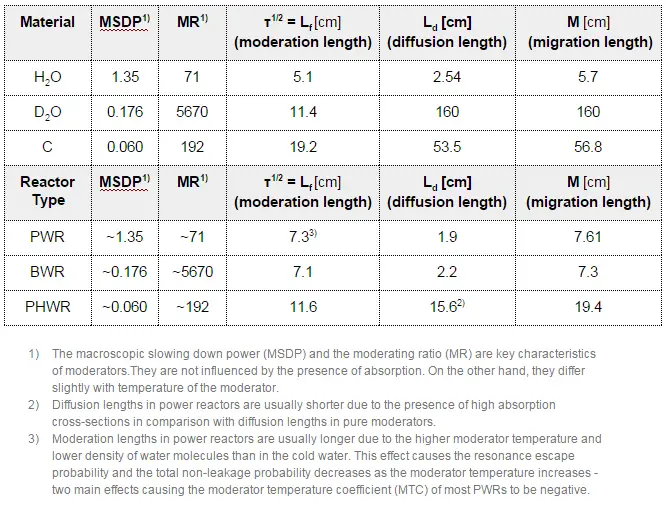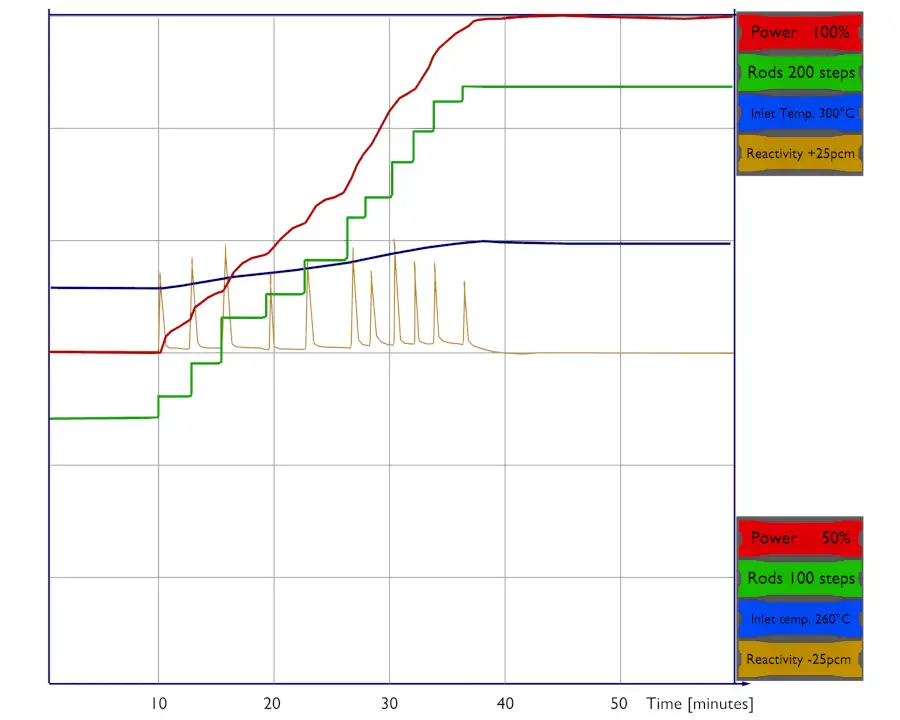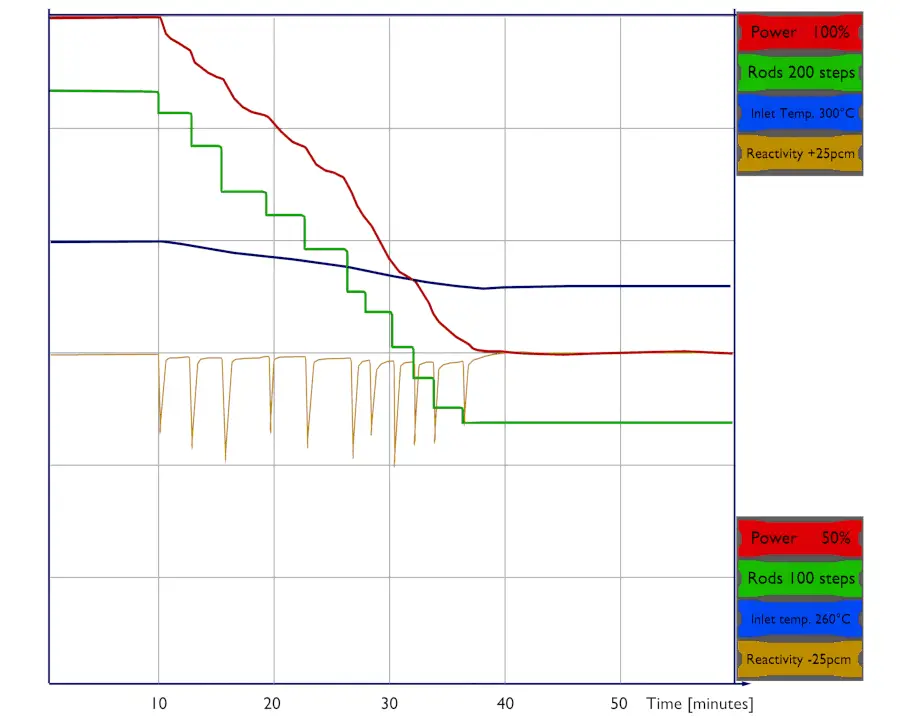According to 10 CFR Part 50; Criterion 11:
“The reactor core and associated coolant systems shall be designed so that in power operating range, the net effect of the prompt inherent nuclear feedback characteristics tends to compensate for a rapid increase in reactivity.
Up to this point, we have discussed the response of the neutron population in a nuclear reactor to an external reactivity input. There was applied an assumption that the level of the neutron population does not affect the properties of the system, especially that the neutron power (power generated by chain reaction) is sufficiently low that the reactor core does not change its temperature (i.e.,, reactivity feedbacks may be neglected). For this reason, such treatments are frequently referred to as zero-power kinetics.
However, in an operating power reactor, the neutron population is always large enough to generate heat. It is the main purpose of power reactors to generate a large amount of heat. This causes the system’s temperature to change and material densities to change as well (due to the thermal expansion).
Source: Youtube
See also: General Atomics – TRIGA
Example: Change in the moderator temperature.
Negative feedback as the moderator temperature effect influences the neutron population in the following way. If the temperature of the moderator is increased, negative reactivity is added to the core. This negative reactivity causes reactor power to decrease. As the thermal power decreases, the power coefficient acts against this decrease, and the reactor returns to the critical condition. The reactor power stabilizes itself. In terms of multiplication factor, this effect is caused by significant changes in the resonance escape probability and total neutron leakage (or in the thermal utilization factor when the chemical shim is used).
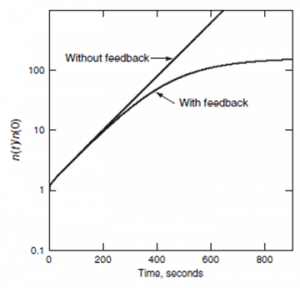
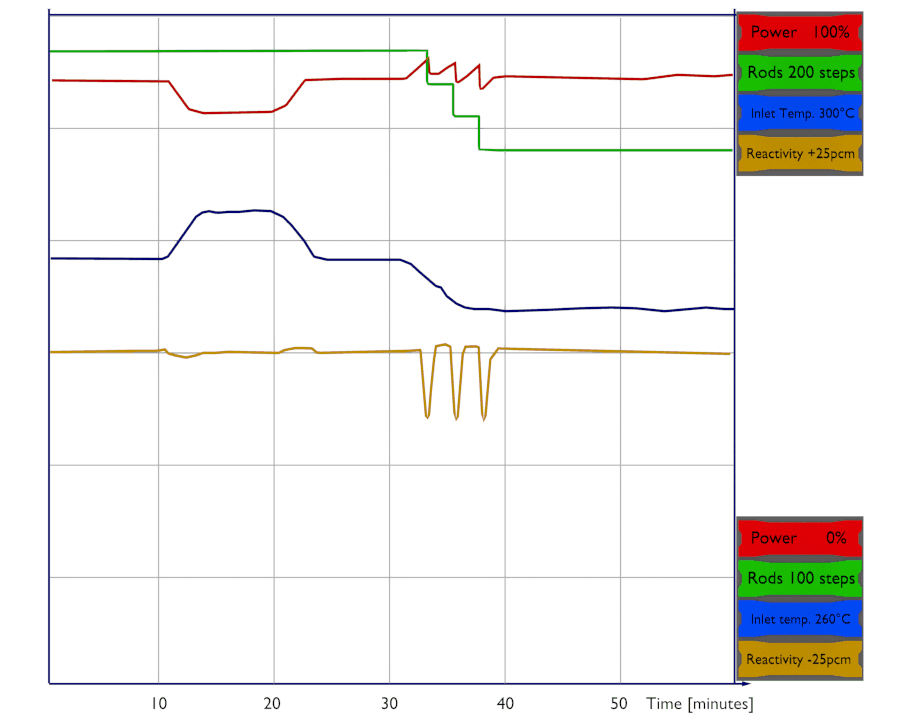
Examples: Change in the reactor power
Reactivity Coefficients
To describe the influence of all these processes on reactivity, one defines the reactivity coefficient α. A reactivity coefficient is defined as the change of reactivity per unit change in some operating parameter of the reactor. For example:
α = dρ⁄dT
The amount of reactivity, which is inserted into a reactor core by a specific change in an operating parameter, is usually known as the reactivity effect and is defined as:
dρ = α . dT
The reactivity coefficients that are important in power reactors (PWRs) are:
- Moderator Temperature Coefficient – MTC
- Fuel Temperature Coefficient or Doppler Coefficient
- Pressure Coefficient
- Void Coefficient
As can be seen, there are not only temperature coefficients that are defined in reactor dynamics. In addition to these coefficients, there are two other coefficients:
The total power coefficient is the combination of various effects and is commonly used when reactors are at power conditions. It is because, at power conditions, it is difficult to separate the moderator effect from the fuel effect and the void effect. All these coefficients will be described in the following separate sections. The reactivity coefficients are of importance in the safety of each nuclear power plant which is declared in the Safety Analysis Report (SAR).
